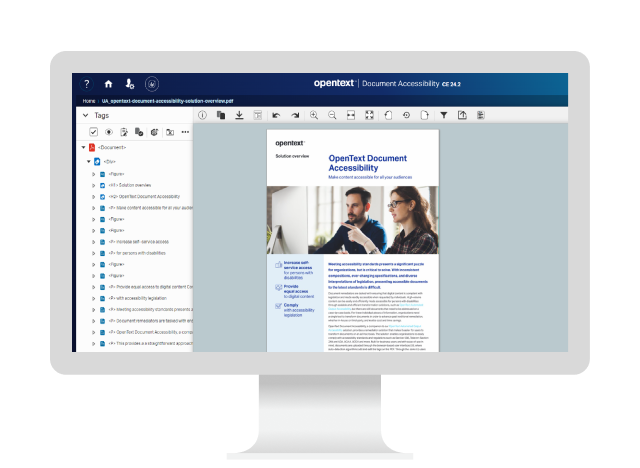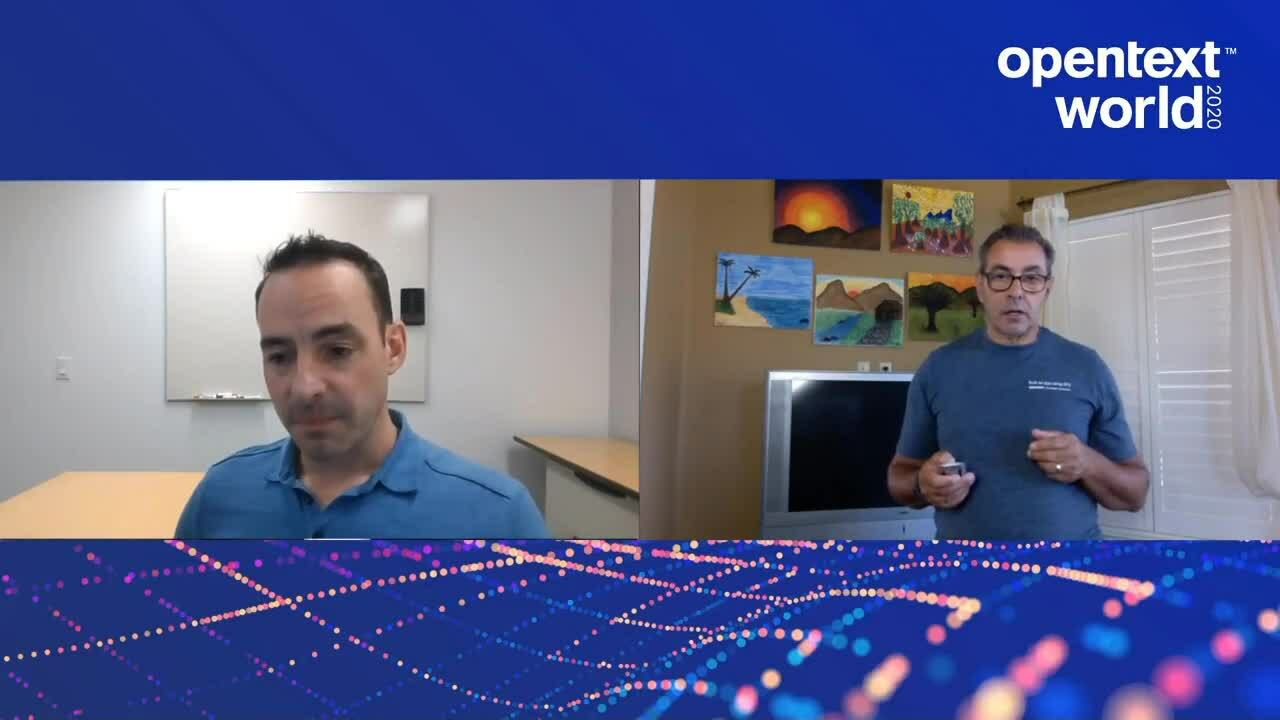OpenText Document Accessibility
Provide an inclusive digital experience with AI-powered accessibility

Overview

How OpenText Document Accessibility can benefit business
-
Lower costs
Eliminate the need for slow, high-cost, manual remediation services with a single application that transforms ad-hoc PDFs on demand.
-
Tag content faster and more accurately
Let the built-in AI speed the content tagging process so users can focus on verifying their accuracy.
-
Create consistency
Apply tags, headers and other assistive structures across a variety of content topics to create consistently accessible documents.
-
Provide equal access to digital content
Offer an inclusive PDF reading experience to improve engagement with persons with disabilities.
Why OpenText Document Accessibility?
-
Built-in AI
Leverage Machine Learning auto-detection algorithms to automatically tag content.
-
Cloud availability
Work in the OpenText™ Cloud alongside business-critical cloud applications and content.
-
Fully featured, web-based remediation environment
Remediate content on-demand with a robust, web-based environment that is available whenever it is needed.
Key features
-
Intuitive, easy-to-use UI
Allows users to upload documents, review and edit auto-applied tags, apply alternate or actual text, add and change headings, modify tables and more in a single graphical environment.
-
AutoDetect models
Employs built-in Machine Learning models that users can train on accessible-compliant documents and extend to specific needs or create entirely new models for document layouts.
-
Built-in alternate text manager
Automatically applies alternate text for images that have been previously tagged to speed up the remediation process.
-
Built-in accessibility checker
Validates that the remediated document meets accessible PDF/UA specifications and, if issues are identified, takes users directly to the item to be fixed.
-
Easy-to-use table editor
Identifies and defines rows, columns, cells and header structures to make tables easy to navigate for individuals using assistive technologies.
Accelerate the value of OpenText Document Accessibility
Deployment
OpenText offers deployment choice and flexibility for OpenText Document Accessibility.
- Accelerate cloud strategies with OpenText cloud expertsOpenText Private Cloud (Single Tenant) on OpenText Cloud, AWS, GCP, or Azure
- Extend your teamOff Cloud, on-premises software, managed by your organization or OpenText
Professional Services
OpenText Professional Services combines end-to-end solution implementation with comprehensive technology services to help improve systems.
- Get a trusted partner to guide your information management pathYour journey to success
- Propel your business into the future with modern solutionsNextGen Services
- Accelerate your information management journeyConsulting Services
- Unlock the full potential of your information management solutionCustomer Success Services
Partners
OpenText helps customers find the right solution, the right support, and the right outcome.
- Search OpenText's Partner directoryFind a Partner
- Industry-leading organizations that enhance OpenText products and solutionsStrategic Partners
- Explore OpenText's Partner solutions catalogApplication Marketplace
Training
OpenText Learning Services offers comprehensive enablement and learning programs to accelerate knowledge and skills.
- Meet the demands of all types of users for effective adoptionLearning Services
- Unlimited access to training with personalized tiers to fit your needsLearning Subscriptions
Communities
Explore our OpenText communities. Connect with individuals and companies to get insight and support. Get involved in the discussion.
- Explore ideas, join discussions, and networkOpenText’s forums
Premium Support
Optimize the value of your OpenText solution with dedicated experts who provide mission-critical support for your complex IT environment.
